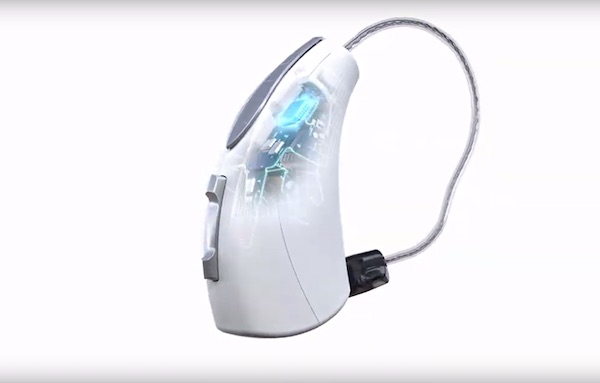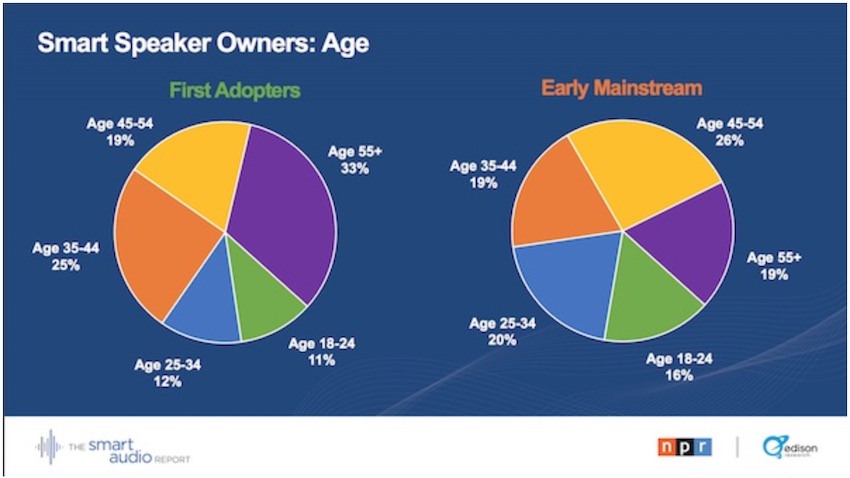Empowering Our Aging Population with Voice Assistant Enabled Hearing Aids

Ten thousand Baby Boomers turn 65 years old each day in the U.S. according to Pew Research. This number of Boomers crossing 65 has been consistent since January 1, 2011, and will continue until 2030. Pew’s population projections estimate that Baby Boomers will comprise 18% of the total US population by 2030. In addition, the US life expectancy currently sits around 78-79 years old, which the World Health Organization projects to continually rise into the 2030s. In essence, there is a significant portion of Americans entering into their retirement age and are projecting to live longer than previous generations.
Our population also becomes more susceptible to hearing loss as it ages. According to a 2017 JAMA Otolaryngology study, age tends to be the leading predictor of hearing loss. The sense of hearing depreciates due to a wide variety of factors as we get older, such as long-term exposure to unhealthy sound levels and the degeneration of sensory cells.
Hearing Loss Often Goes Untreated
Hearing loss in adults aged 65+ is a widespread issue. The World Health Organization conducted a study in 2012 to measure the magnitude of “disabling hearing loss” (defined as a loss of 40dB) and found that a third of the world’s population aged 65 and older have a disabling hearing loss. In high-income countries, such as the U.S., that number is closer to about 18%.
The issue is that not nearly enough older adults are actively treating hearing loss with any sort of amplification. The National Institute of Deafness and other Communication Disorders found that hearing aid penetration rates have historically been pretty low. Only about 25-30% of U.S. adults aged 70+ who could benefit from wearing hearing aids have ever used them.
To compound the issue, a number of studies are emerging that show a correlation between hearing loss and a host of comorbidities, including a higher risk of falls, cardiovascular disease, diabetes, visual impairment, hospitalization, depression, cognitive decline, and dementia. This is not to say that hearing loss causes those comorbidities, but that they’re correlated. For example, when someone loses their hearing, they might become socially withdrawn or isolated because of how challenging listening situations have become.
Smart Assistant Enabled Hearing Aids
The fact of the matter is that an increasing number of people are most likely going to need some type of tool to help treat their hearing loss. The traditional tool prescribed by the hearing care professional has been a hearing aid, but the products coming to market today are far different and more capable than devices from even five years ago. A major reason why is because of the standardization of Bluetooth connectivity. In 2014, The first “made for iPhone” hearing aid debuted, The Resound Linx, ushering in a new era for hearing aids. Flash-forward to today and nearly every hearing aid from the five major manufacturers is Bluetooth compatible with an iPhone, Android phone or both.
Bluetooth connectivity opened the door to allow hearing aid manufacturers to create companion apps for each of its devices, which provide a variety of new uses and functions. As I wrote about in a previous column, one of the emerging features that multiple manufacturers are bringing to market is smart assistant access. Certain hearing aids, such as Starkey’s Livio AI, can access the manufacturers’ “Thrive Assistant” through a double tap on the device. The Thrive Assistant acts as a localized agent, ready to answer any queries that pertain to its knowledge graph around hearing aid-related questions, while general queries are sent to the cloud and fielded by Google Assistant.

According to market research conducted by NPR and Edison Research, adults aged 55+ comprised 33% of the first adopters, which is defined as owning a speaker for more than one year, and 19% of the early mainstream, which is defined as owning a speaker for less than one year. As counter-intuitive as it might seem to consider this demographic as early adopters of a new technology, it actually makes quite a bit of sense.
The current user interface we predominately rely on to communicate with our technology, mobile, can be limiting to individuals who struggle to operate a smartphone due to age-related ailments such as deteriorating eyesight, mobility or dexterity. When presented with the ability to communicate with technology through natural speech, our aging population might find that this is a more conducive UI to interact with their technology relative to tapping, typing and swiping on a small glass box.
The Hearing Aid Value Proposition Evolves
It would appear that these two trends, a swelling population of aging adults who are prone to age-related hearing loss, and the proclivity that said population has toward a voice UI, are due to intersect. As Google demonstrated at Google I/O this year with Duplex on the web, our smart assistants are beginning to handle whole processes involved with certain tasks that we currently rely on our phones and computers for, such as renting a car. The technology is quickly moving past setting timers and looking up the weather in terms of its utility.
As smart assistants and a voice UI slowly become a compelling alternative to our phones for a growing number of tasks, our aging population might want to be able to easily (and discretely) communicate with their technology at all times via their assistants. Multi-functional hearing aids that serve as both an amplifier and a discreet home for smart assistants, begin to change the overall value proposition for the device. Transforming the devices into a conduit and interface to one’s technology might ultimately be the remedy to the historically low penetration levels of amplification devices for those that need it. Hopefully, this new dimension to hearing aids will compel more people to consider treating their hearing loss sooner.
Alexa Program at UK Care Home Shows the Power of Voice-First Devices for the Elderly
Alexa Skill Aimed at Assisting Alzheimer’s Patients Launches in the UK








